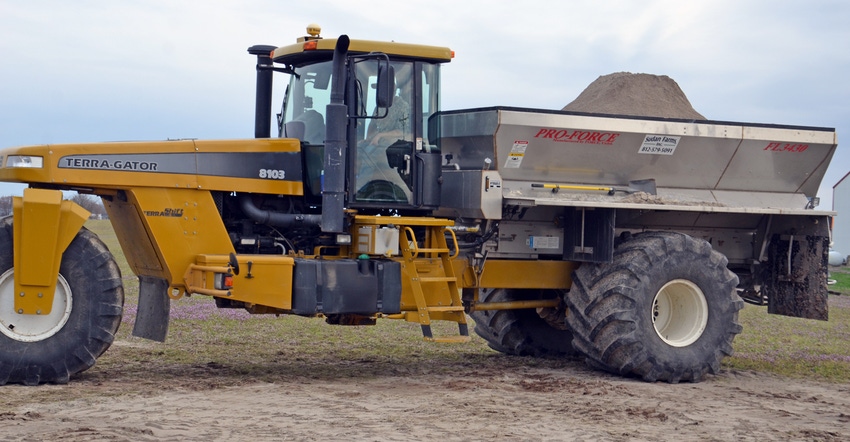
One key reason for soil testing is to monitor pH levels and correct low pH by applying lime when necessary. Jamie Bultemeier, an agronomist and director of marketing and sales for A&L Great Lakes Laboratories, Fort Wayne, Ind., says proper pH is important to make sure nutrients in the soil are available to crops, and to steer clear of potential issues with herbicide injury or herbicide carryover to specific crops. This can happen if pH is too low or too high, depending upon the herbicide.
Taking soil tests properly is the first step. The second step is interpreting results correctly when you get them back from the soil testing lab, Bultemeier says.
“Our lab reports two pH values for each soil sample,” he explains. “You will find a column labeled simply ‘soil pH’ and a column labeled ‘buffer pH.’ Both are important, but for different reasons.”
Understand pH results
The first place you want to look is at the soil pH column, Bultemeier says. “That tells you whether you need lime or not,” he says. “That may depend upon which crops you’re growing. For example, the recommended soil pH is typically higher for alfalfa than for soybeans and corn.”
No matter which crops you’re growing, the pH column indicates the value agronomists and consultants talk about when they determine whether the pH is in the acceptable range for a crop.
Randall Warden, president and CEO of A&L Great Lakes Labs, notes that the first pH column represents the water pH. The second column, buffer pH, represents how the soil sample solution reacts with positively charged ions that would neutralize acidity in the soil. The procedure Warden’s lab uses to determine buffer pH is called the Sikora process.
“The buffer pH tells you how much lime you need if you need lime,” Warden explains. Soils with higher clay content that test below the recommended pH level will require more lime to return pH to the recommended level than soils that tend to have less organic matter and lower cation-exchange capacities.
Use results
“We recommend looking at the soil pH column first,” Bultemeier says. “If the pH is lower than you desire, then look at the buffer pH column. Numbers in that column help determine how much lime is needed to correct the soil acidity problem which results in low pH.”
Because total lime recommendations will tend to be higher for soils with higher clay content at the same pH than soils with less clay content, you may receive a recommendation to make a split application of lime. In other words, apply part of the lime now, and then come back with the rest one to two years later. That is generally more effective than applying it all at once when high rates are needed to correct the problem, Bultemeier says.
For example, you likely wouldn’t want to apply 8 tons of lime per acre at once, even if that much was recommended to correct pH problems on a high clay-content soil. You would more likely split the application, he concludes.
About the Author(s)
You May Also Like




